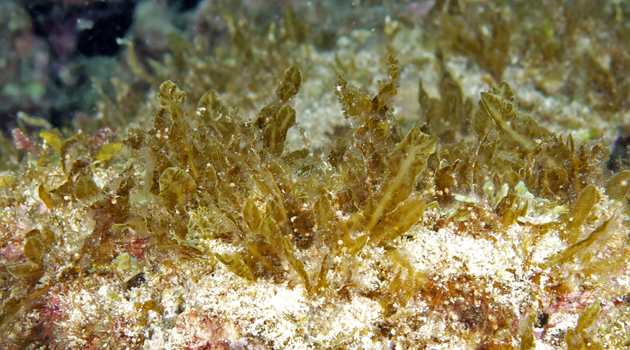Limu Līpoa

Seaweeds, called limu in Hawaiian, include a wide variety of marine algae. These marine plants are the basis of the food web on reefs and rocky shores. In Hawai’i, limu are found in many marine environments from tide pools to deep reef slopes. Most seaweeds also need a hard surface of rock or coral on which to grow, few are found in sandy environments. There are about 600 different species of seaweeds in Hawai’i.
There are three basic groups of seaweeds, based on the color of the pigments they have for use in photosynthesis. Green seaweeds have green pigments called chlorophylls, brown seaweeds are golden or brownish-green because they have brown and orange pigments in addition to the green ones. Red seaweeds are usually pinkish or purplish in color, reflecting their additional reddish and bluish pigments.
Dictyopteris plagiogramma, and D. australis are two species of brown seaweed given the Hawaiian name limu līpoa, and both are found in shallow water reef flats and in deeper water. Limu līpoa was traditionally eaten heavily salted and preserved. The strong odor from the underwater seaweed beds is mentioned in Hawaiian songs and chants.
Quick Facts
Hawaiian name:
Limu līpoa
Scientific name:
Dictyopteris plagiogramma, and D. australis
Distribution:
Widespread in tropical and temperate seas, including Hawai’i
Size:
D. australis known epiphyte on other algae, both species also grow to 12 inches (30 cm)
Support the Aquarium
Contact Us
Honolulu, HI 96815
(808) 923-9741
Search
- Already a Volunteer?
- Click Here To Sign In


 Donate
Donate
